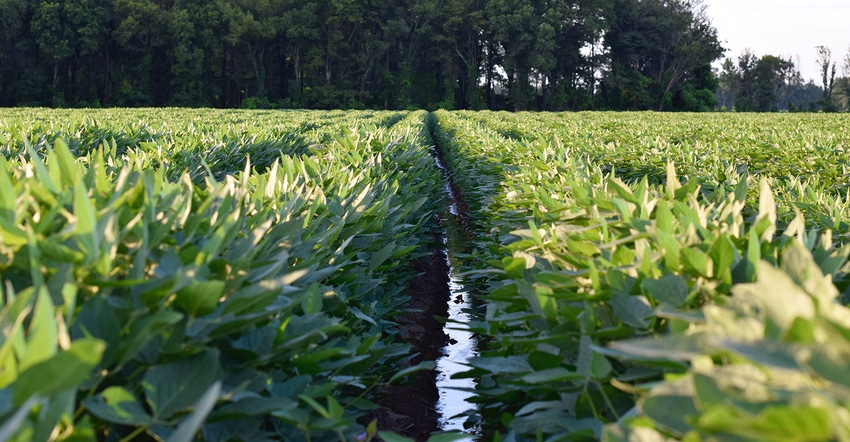June 1, 2021

Sponsored Content
Many Mid-South soybean producers would agree that a wet, cool spring slowed planting intentions.
It turns out, though, that rainfall totals this spring were not all that different from last year, and were actually lower than the mid-Delta’s 10-year average.
With soybeans normally planted between late March and mid-April, why then were many growers still trying to find a dry field to plant in late May?
"It’s not about how much rain falls, it’s about when it occurs,” says Mark Silva, Delta Weather Program coordinator for Mississippi State University. “Sporadic rainfall during planting is a farmer’s nightmare.”
Between March 1 and May 18, the Stoneville, Mississippi, weather station received 13.82 inches of rainfall. During that same time period in 2020, the total was 13.93 inches. The 10-year average for that period: 15.87 inches.
“While the year-to-year difference is only about one-tenth of an inch of rain, it’s when we are getting the rains that is the issue,” Silva says. “The timing of the rainfall has been so sporadic. As soon as it gets a little dry, you get another quarter-inch of rain, which keeps folks out of the fields and delays planting.”
The story is similar for both ambient and soil temperatures. Between the first of the year and May 19, the average maximum temperature at the Delta weather station was 63 degrees this year and 65 last year. The average minimum temperature was 47 in 2020 and 43 this year.
Soil temperatures are also comparable between the two years. This year’s May 13 maximum soil temperature, taken at a two-inch depth, was 83 degrees at the Delta Research and Extension Center. That figure on the same day in 2020 was 85. At a four-inch depth, the maximum soil temperature fluctuated from 82 in 2020 to 79 in 2021.
“It always goes back to when we get the rainfall. Excessive rainfall in February usually doesn’t affect planting in the same way frequent rains will in March and April,” Silva says. “When you get the rainfall is key.”
For many Mid-South soybean producers, rainfall frequency during the ideal soybean planting window resulted in late planting and delayed emergence.
What that means to soybean growers is that when nearby corn crops are drying down and insects are moving to healthy, green hosts, soybeans are a likely target.
Early planted soybeans have often reached maturity in August, and are not generally susceptible to a late-summer flush of yield-robbing worms and loopers. That may not be the case for a large percentage of the Mid-South’s 2021 soybean crop.
Being prepared for pest pressure this summer will be crucial to realizing harvest potential.
With two unique modes of action, Intrepid Edge® insecticide delivers fast and lasting control of pests like corn earworm and soybean looper, and better insect control means better yield potential at harvest time.
It's time to achieve faster pest control and maximize yield with the exceptional performance of Intrepid Edge® insecticide. Learn how putting the power of Intrepid Edge to work can protect your soybean crop from loopers and worms this summer.
TM ® Trademarks of Corteva Agriscience and its affiliated companies. Intrepid Edge is not registered for sale or use in all states. Contact your state pesticide regulatory agency to determine if a product is registered for sale or use in your state. Always read and follow label directions. © 2021 Corteva. CA14-911-032 (06/21) BR CAAG1INTE051
You May Also Like




